Rank Species | Genus Eryngium Higher classification Eryngium | |
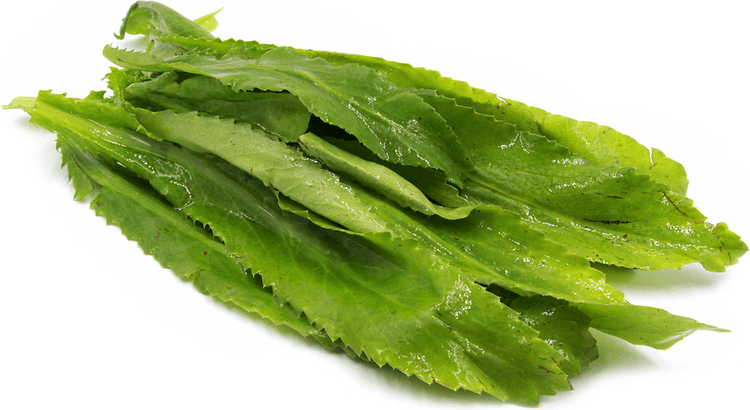 | ||
Similar Water, Coriander, Sugar, Vietnamese coriander, Nem | ||
Octonary ingredients of eryngium foetidum formulations pankaj oudhia s medicinal plant database
Eryngium foetidum is a tropical perennial herb in the family Apiaceae. Its scientific Latin name literally translates as "foul-smelling thistle". Common names include culantro (/kuːˈlɑːntroʊ/ or /kuːˈlæntroʊ/), Mexican coriander and long coriander. It is native to Mexico and South America, but is cultivated worldwide, sometimes being grown as an annual in temperate climates. In the United States, where it is not well known outside Latino/Hispanic, Indo-Caribbean, and Caribbean communities, the common name culantro sometimes causes confusion with cilantro, a common name for the leaves of Coriandrum sativum (also in Apiaceae), of which culantro is said to taste like a stronger version of the latter.
Contents
- Octonary ingredients of eryngium foetidum formulations pankaj oudhia s medicinal plant database
- Common names
- Culinary
- Traditional medicine
- References
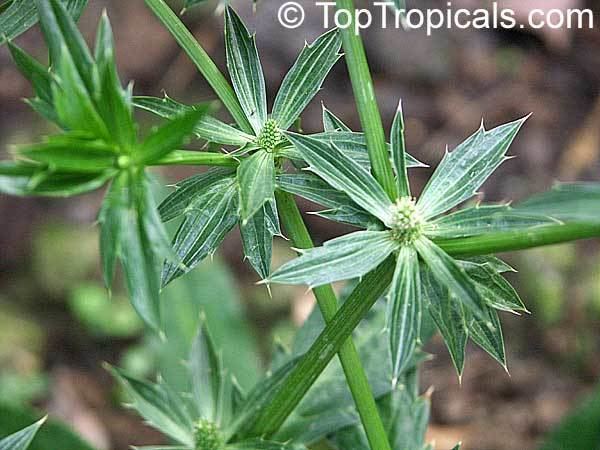
Common names
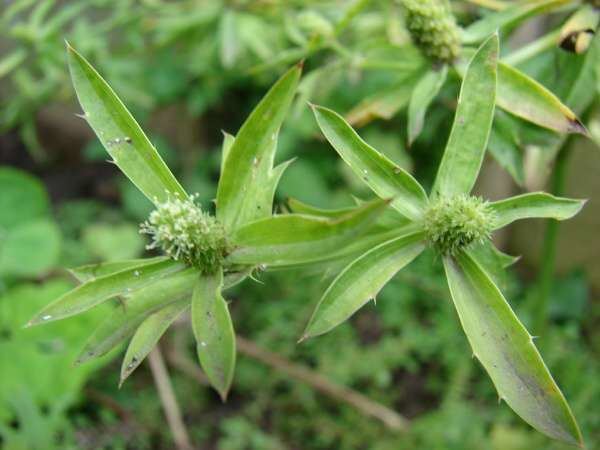
Commonly known as culantro in English-speaking Caribbean countries, Eryngium foetidum is also referred to as shado beni (from French chardon béni, meaning "blessed thistle," not to be confused with the similarly named Cnicus benedictus) or in Caribbean Hindustani it is known as, bandhaniya (Devanagari script: बन्धनिय, meaning "shrub cilantro" or Jungle coriander).
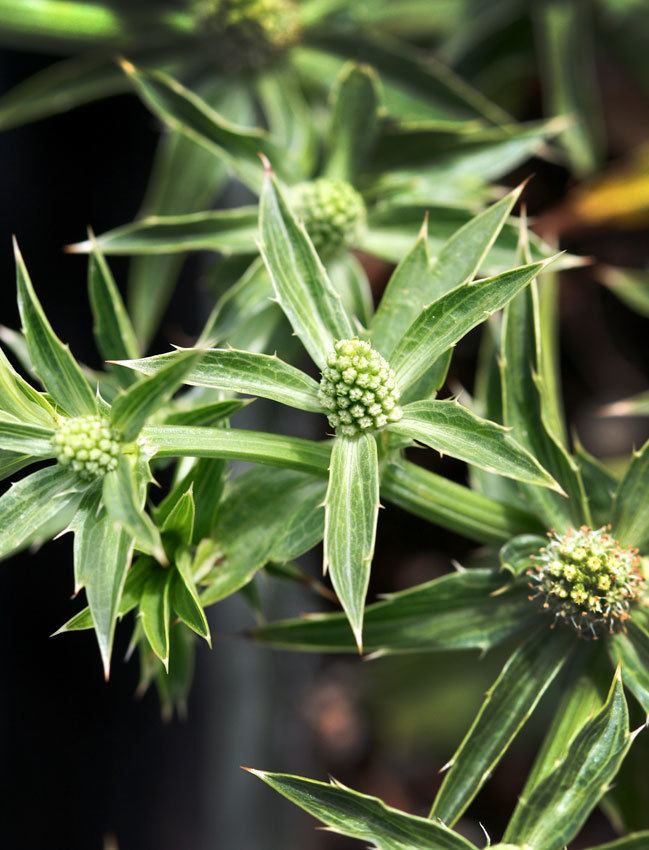
In India, it is used mainly in the northeastern states of Assam, Manipur, Mizoram, Tripura and Nagaland, and it is also used in the Andaman & Nicobar Islands, and in a few parts of Tamil Nadu, Kerala and Karnataka. It is not much familiar in other parts of India.
Culinary
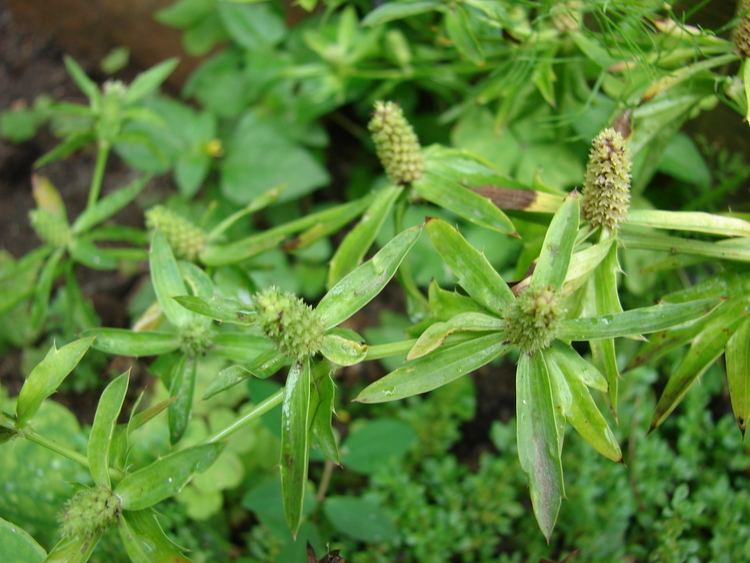
E. foetidum is widely used in seasoning, marinating and garnishing in the Caribbean, particularly in Panama, Puerto Rico and Trinidad and Tobago, and in Peru's Amazon regions. It is also used extensively in Thailand, India, Vietnam, Laos, and other parts of Asia as a culinary herb. It dries well, retaining good color and flavor, making it valuable in the dried herb industry. It is sometimes used as a substitute for cilantro (coriander in British English), but it has a much stronger taste.
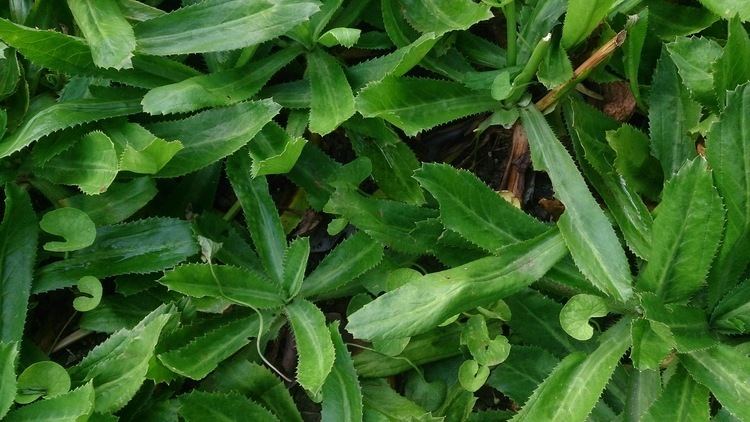
In the United States, E. foetidum grows naturally in Florida, Georgia, Hawaii, Puerto Rico, and the Virgin Islands. It is sold in grocery stores as a culinary herb under the common names; "culantro" /kuːˈlɑːntroʊ/ or "recao" /reɪˈkaʊ/.
Traditional medicine
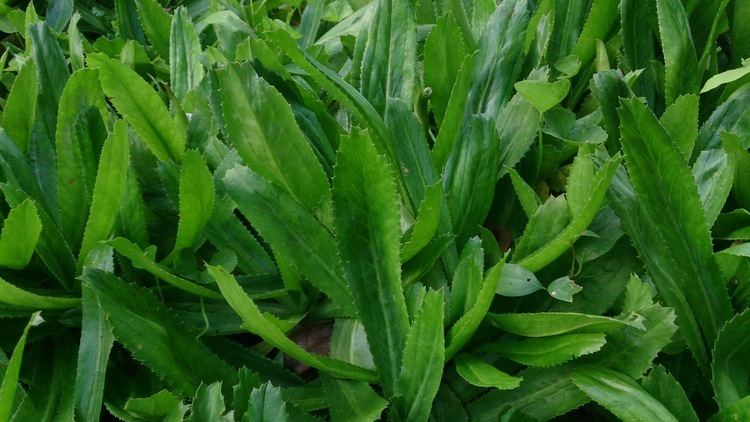
E. foetidum has been used in traditional medicine for burns, earache, fevers, hypertension, constipation, fits, asthma, stomachache, worms, infertility complications, snake bites, diarrhea, and malaria.
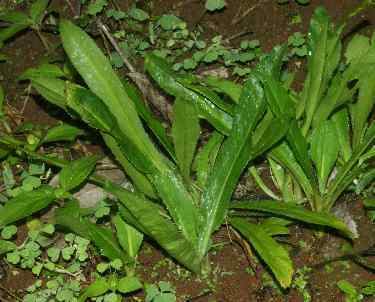
Eryngium foetidum is also known as E. antihystericum. The specific name antihystericum reflects the fact that this plant has traditionally been used for epilepsy. The plant is said to calm a person's 'spirit' and thus prevents epileptic 'fits', so is known by the common names spiritweed and fitweed. The anticonvulsant properties of this plant have been scientifically investigated. A decoction of the leaves has been shown to exhibit anti-inflammatory and analgesic effects in rats.
Eryngial is a chemical compound isolated from E. foetidum. The University of the West Indies at Mona, Jamaica, has investigated the use of enyngial as a treatment for human Strongyloides stercoralis infection (strongyloidiasis).
It is used as an ethno-medicinal plant for the treatment of a number of ailments such as fevers, chills, vomiting, burns, fevers, hypertension, headache, earache, stomachache, asthma, arthritis, snake bites, scorpion stings, diarrhea, malaria and epilepsy. The main constituent of essential oil of the plant is eryngial (E-2-dodecenal). Pharmacological investigations have demonstrated anthelmintic, anti-inflammatory, analgesic, anti-convulsant, anti-clastogenic, anti-carcinogenic, anti-diabetic and anti-bacterial activity.
